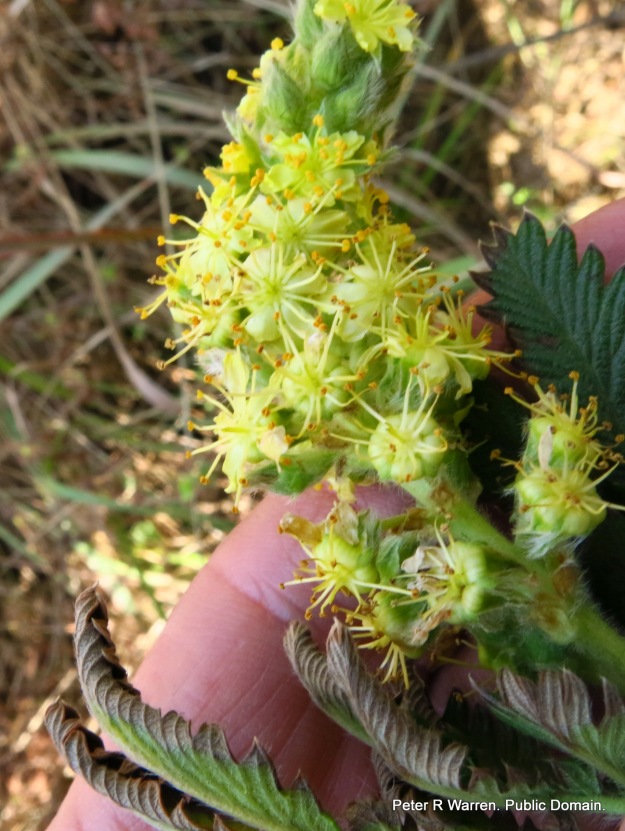Leucosidea serica Common Names: Ouhout, Zulu: umtshitshi, Sotho: cheche
Before the grasslands midlands were settled by Europeans, there were few trees besides those clustered in damp or rocky places. One of the original Midlands trees was Leucosidea serica. A real pioneer and found is a variety of places. Shrubby and not very tall, seldom higher than 6m.
Small yellowish-green star like flowers are borne in sprays on the ends of branches. The very attractive grey green compound leaves are aromatic , bark is rough and flaky. Leucosidea dislikes a hot summer and is very frost resistant, making it an excellent fast growing pioneer plant for a cold new garden. Birds often nest in the branches. Young leaves browsed by bushbuck. Small nuts are enclosed in the base of old flowers. It makes excellent firewood as it burns very slowly, and great for woodcarving too. Used to make the framework for sleighs to carry grass, fuel or harvest.
In mountainous areas the presence of Leocosidea was taken as an indication that streams were suitable for trout stocking.

